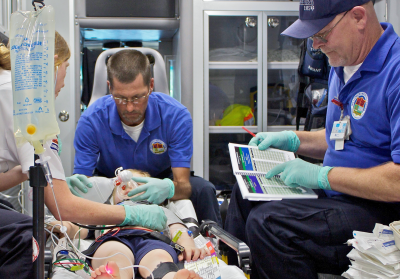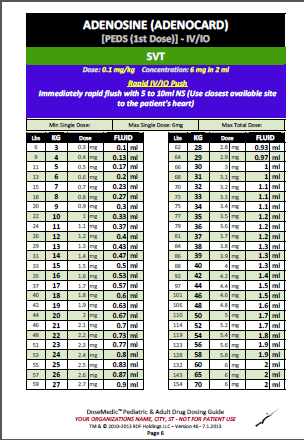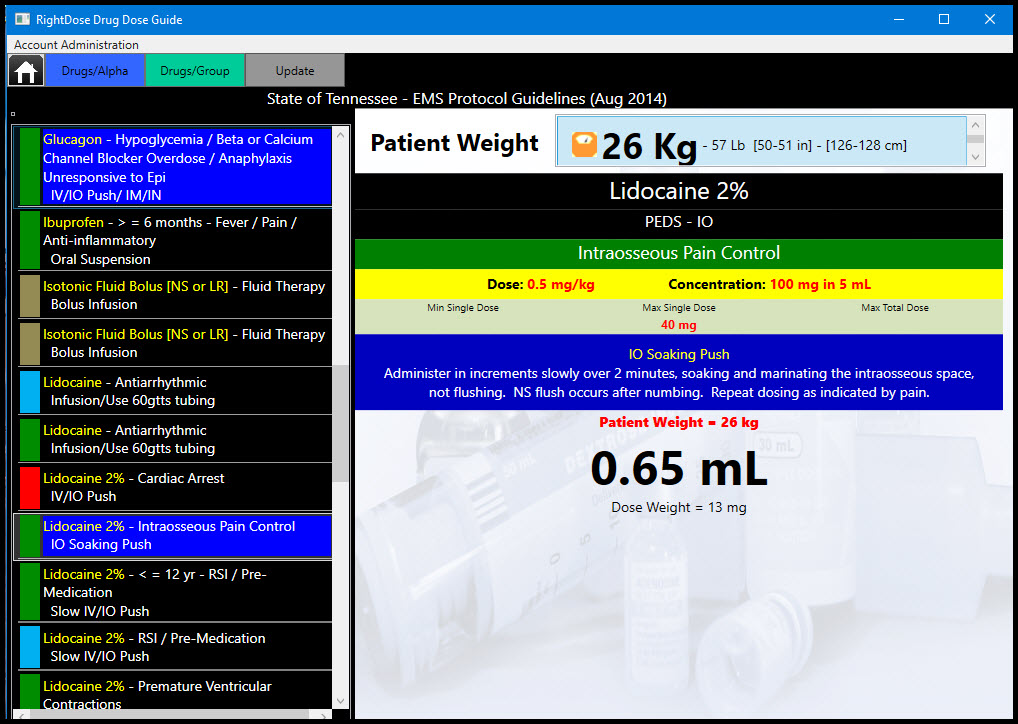The Results
After years of intermittently developing various small versions of the dosing guide, the first fully customized version deployed in a busy suburban Tennessee EMS system in early 2009. The results were immediate and dramatic, with outcomes catching the attention and support of state EMS officials, the state’s committee on pediatric emergency care, Tennessee EMS for Children and pediatric specialists from all four comprehensive children’s hospitals.
In February of 2016, significant safety improvements results were demonstrated in a pediatric drug reseach project conducted across the entire state of Tennessee which reduced the error rate drastically from 65% down to only 4%. The research abstract is published on UCLA’s Prehospital Care Research Forum.
Notable Outcomes:
- Precise accuracy of milligrams, milliliters and administration instructions for every medication.
- Drastic reduction of preparation time needed to administer medication.
- Enhanced provider confidence and decreased anxiety.
- Improved clinical decision making resulting in reduced drug delivery time.
- Marked improvement in patient outcomes noted by comprehensive children’s hospital.

After the initial deployment of the first generation dosing guide, which contained more than 3,500 calculations and took months to verify, it became obvious that a new process was needed in order to implement the tool across multiple organizations.
Three additional years of research and development lead to a complete retooling of the appearance, size, content and layout of the guide in order to optimize safety and ease of use in any environment. Additionally, the first generation of a web-based platform was developed for rapid access and wide-spread deployment, first on a state level and then nationally. 
The latest version of the dosing guide has received accodlades from providers across the state and it is now being utilized in multiple organizations, EMS units, hospitals, clinics, doctors offices and even dentist offices - with great results.
To many, the printed guide solution may appear to underutilize existing technology. But there is a strategic purpose for providing the tool in printed format. Many organizations across the country do not have the budget or equipment to support an electronic media platform. Providing a printed version offers a universal solution for all organizations–and the results speak for themselves. Most importantly, it assures more rapid deployment of a critical tool designed to drastically reduce errors and save children’s lives.

e-RightDose:
RightDose has announced the availability of e-RightDose™ for Windows 7/8/10 desktop and touch screen devices including ToughBook. iPad apps are available for iOS and shortly for iPhones. These apps provide the same accurate, customized dosing information as the hard-copy Dosing Guide. They provide instant access to critical information at the point of care. e-RightDose apps are immediately updated with your changes to drug doses and protocols. e-RightDose apps use the same data that is printed in your RightDose Dosing Guide. e-RightDose is a great tool for all caregivers, regardless of environment – EMS, hospital, clinics, etc. It truly enables each to achieve their goal and ours, which is to ensure that every patient gets the right dose of medication – every time!" said Bob Steele, RightDose co-founder

